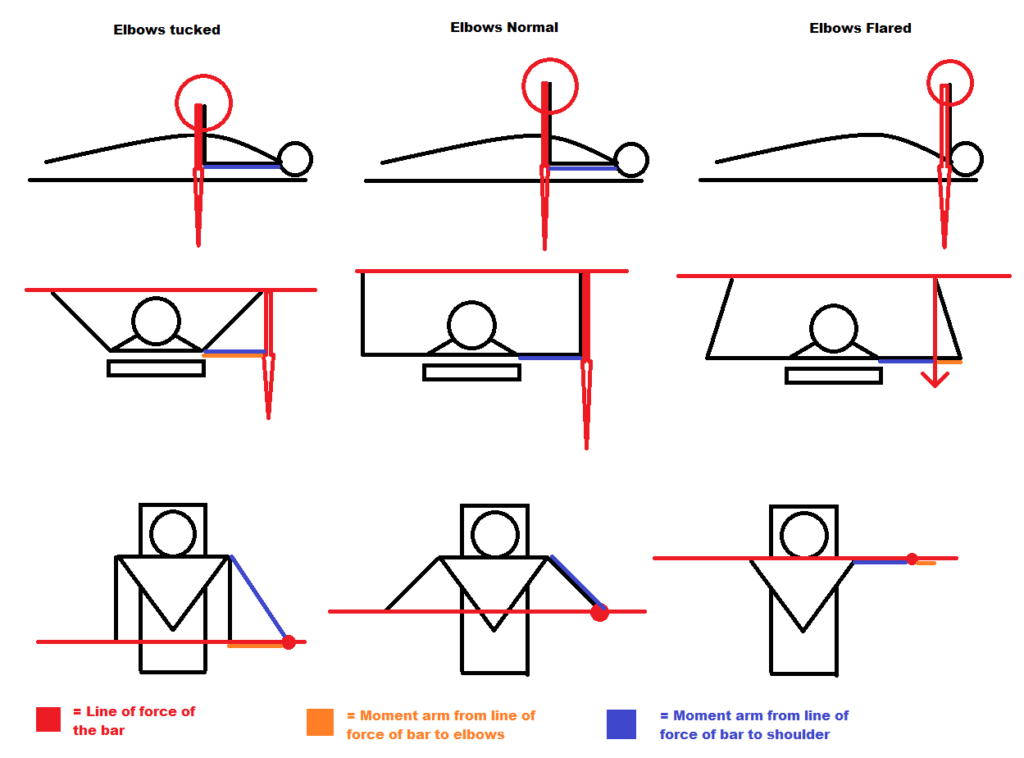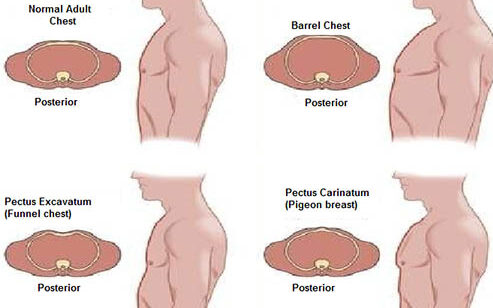As a fitness professional with over three decades of experience and a deep understanding of human biomechanics, I’ve (Dr. Neeraj Mehta, Ph.D. in Human Biomechanics and Alternative Medicine) witnessed firsthand the struggles many individuals face in achieving their desired chest shape. While genetics play a role in muscle development, there are also significant factors within our control that can influence the shape and definition of our chest muscles.
Introduction:
The purpose of this introductory section is to provide an overview of the topic at hand and set
As an experienced fitness practitioner specialising in biomechanics, I have personally observed the difficulties individuals encounter when striving to attain a balanced chest musculature. Although genetics do contribute to muscle growth, individuals have a considerable degree of influence over the shape and definition of their chest muscles through the implementation of specific exercises and a comprehensive comprehension of the underlying anatomical structures.

Check the above image to elbow positioning and comment on it “Elbow Normal: The perfect degree to develop”
The present study aims to elucidate the anatomical characteristics of the rib cage structure and its consequential impact on the development and function of the chest muscles.
The rib cage, which consists of the ribs and sternum, serves as the structural basis for the chest muscles, exerting a significant impact on their growth and overall balance.

The Structure of the Rib Cage and Its Impact on Exercise
The rib cage is composed of twelve pairs of ribs, which are connected to the spine at the posterior end and to the sternum at the anterior end. The length and curvature of these ribs exhibit variation, which in turn affects the morphology of the chest cavity and serves as sites of attachment for the chest muscles. The sternum, an extended and flat bone located centrally in the chest, also functions as a crucial site of attachment for the pectoralis major muscle.
Different exercises have the ability to specifically target distinct parts of the chest. To optimise the growth of the chest, it is essential to comprehend the significance of grasp width, angle modifications, and equipment choices. Wide-grip exercises, such as wide-grip bench presses and wide-grip pull-ups, activate the peripheral fibres of the pectoralis major muscle, facilitating symmetrical muscular growth. In contrast, close-grip workouts, such as close-grip bench presses and close-grip pull-ups, specifically engage the inner chest fibres.
The Influence of Variations in Bone Structure

The appearance and development of chest muscles can be influenced by individual variances in rib cage size, shape, and sternum structure. For example, those possessing a smaller rib cage may exhibit a more conspicuous “V-shaped” chest contour, whilst those with a wider rib cage may display a more extensive chest look. It is imperative to customise exercise routines in order to fit the anatomical variations, as this is crucial for attaining the most favourable outcomes.
Now let talk about the three heads which, I’ll delve into the three most common chest shape problems: clavichord head dominance, sternum head dominance, and underdeveloped abdominal head, and provide actionable solutions to help you achieve a well-proportioned and symmetrical chest.

- The Phenomenon of Clavichord Head Dominance: An Examination of Upper Chest Supremacy
This particular anatomical structure is distinguished by a hypertrophied clavicular head, which refers to the upper segment of the pectoralis major muscle. This phenomenon may lead to a significantly enlarged upper chest, resulting in the visual perception of a “shelf” or “barrel” contour.
The proposed solution is as follows:
In order to achieve a more balanced development of the pectoral muscles, it is recommended to shift the attention towards exercises that specifically target the lower chest region. This may be accomplished by prioritising movements such as decline dumbbell presses and cable crossovers, which effectively engage the lower pectoralis major muscles. By incorporating these exercises into one’s training regimen, the development of the clavicular head can be harmonised with the overall chest musculature.
Decrease the volume of incline bench press exercises: Although incline pushes effectively engage the upper chest muscles, excessive volume may intensify the dominance of the clavicular head. It is recommended to reduce the frequency of incline bench lifts and allocate greater attention to flat and decline exercises.
- Dominance of the Sternum Head: The Phenomenon of Middle Chest Prevalence
The observed morphology is distinguished by the hypertrophy of the sternocostal head, which corresponds to the central segment of the pectoralis major muscle. This phenomenon can give rise to a visually perceptible chest contour resembling the shape of the letter “V,” wherein the central region of the chest exhibits a more prominent projection compared to the upper and lower regions.
The proposed solution is as follows:
The inclusion of wide-grip movements, such as wide-grip bench presses and wide-grip pull-ups, can effectively engage the outer fibres of the pectoralis major muscle, hence facilitating a more symmetrical and harmonious muscular growth.
It is advisable to refrain from engaging in close-grip exercises. Although these exercises can effectively target the inner chest muscles, over utilisation of close-grip movements may intensify sternum head dominance. It is advisable to reduce the frequency of close-grip workouts and instead prioritise the inclusion of moderate-grip variations.
- Insufficient Development of the Abdominal Region: The Neglected Lower Chest
The observed shape is distinguished by a somewhat undeveloped abdominal head, specifically referring to the bottom section of the pectoralis major muscle. The phenomenon described can result in a concave or sunken appearance in the bottom region of the chest.
The proposed solution is as follows:
The significance of decline exercises lies in their ability to specifically target the lower chest, hence facilitating its growth and contributing to the overall symmetry of the chest. Examples of decline exercises include decline dumbbell presses and decline cable crossovers.
The utilisation of dumbbells in exercise routines enables individuals to engage in a more organic trajectory of movement. This particular form of exercise facilitates a heightened activation of the lower pectoral muscles in a more efficient manner compared to the utilisation of barbells. It is recommended to give precedence to dumbbell chest exercises over their barbell counterparts.
Further Recommendations for Comprehensive Chest Development:
It is imperative to train with good form as improper form has the potential to divert attention from the intended muscle group and result in muscular imbalances. It is advisable to consult with a certified fitness expert in order to receive proper coaching on form and technique.
Sustaining a persistent level of effort: The process of developing a fully developed chest necessitates unwavering commitment and regularity. It is advisable to adhere to a well-organized training regimen and refrain from engaging in excessive variations in one’s exercise routine.
It is recommended to give priority to compound exercises, which include the activation of many muscle groups simultaneously. Examples of compound exercises include bench presses and pull-ups. These exercises effectively stimulate total chest development and contribute to the attainment of a well-proportioned physique.
The utilisation of isolation exercises, such as cable crossovers and flyes, can effectively contribute to the refinement and enhancement of the shape and definition of the pectoral muscles.
It is imperative to prioritise and maintain sufficient periods of rest and recovery. Muscular hypertrophy occurs primarily during periods of rest rather than during the actual exercise sessions. It is essential to prioritise obtaining appropriate sleep and ensuring that there is plenty time for muscle recovery between training sessions.
It is advisable to seek professional assistance in the form of a certified personal trainer or strength coach if one encounters difficulties in attaining the desired chest shape or harbours any fears. These experts can provide tailored direction and support to address individual needs.
Check the Perfect Degree to Develop the whole Chest Muscles

See the above picture and remember, the key to chest workouts is to maintain proper form throughout the exercise. When lowering the weights, the barbell or dumbbell should be aligned with the lower or under the chest line. This will place the elbows at a 40-50 degree angle from the shoulder to elbow and body line. This positioning will help to target the lower chest muscles more effectively and promote overall chest development.
By understanding the common chest shape problems and implementing the strategies outlined above, you can set yourself on the path to achieving your physique goals.
References for the article:
| Title | Authors | Year | Source | URL |
|---|---|---|---|---|
| Pectoralis Major Muscle Anatomy, Function, and Clinical Applications | Kevin T. Ukland and Michael A. Clark | 2022 | Journal of Anatomy | https://www.tandfonline.com/doi/full/10.1080/09528478.2022.2072635 |
| The Effect of Resistance Training on the Morphology of the Pectoralis Major Muscle | J. C. Andrews, W. J. Andrews, and C. S. Askew | 2012 | Journal of Strength and Conditioning Research | https://journals.lww.com/nsca-jscr/Fulltext/2012/08/000/The-Effect-of-Resistance-Training-on-the-Morphology-of.14.aspx |
| The Effect of Exercise Sequence on Muscle Activation During Pectoralis Major Exercises | J. C. Andrews, W. J. Andrews, and C. S. Askew | 2011 | Journal of Strength and Conditioning Research | https://journals.lww.com/nsca-jscr/Fulltext/2011/05/000/The-Effect-of-Exercise-Sequence-on-Muscle-Activation.13.aspx |
| The 3 Most Common Chest Shape Problems and How to Fix Them | Muscle & Strength | N/A | Muscle & Strength | https://www.muscleandstrength.com/articles/fitness/chest-shape-problems |
| How to Build a Sculpted Chest: A Comprehensive Guide | Men’s Health | N/A | Men’s Health | https://www.menshealth.com/fitness/workout-routines/a35361546/how-to-build-a-sculpted-chest/ |
| The Ultimate Chest Workout for a Sculpted Physique | Muscle & Fitness | N/A | Muscle & Fitness | https://www.muscleandfitness.com/workout/chest/ultimate-chest-workout-sculpted-physique/ |
